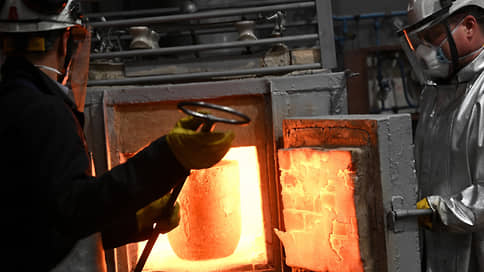Analysts explained the sharp jump in output recorded by Rosstat in February
[ad_1]

Most economists agree that the surge in industrial production volumes discovered by Rosstat in February does not change the overall dynamics of output – it is close to stagnation, although at a high level. The main reasons for this situation are record capacity utilization and a shortage of workers, analysts believe – there is nothing and no one to accelerate production further without a radical increase in productivity and expansion of the production fleet.
Analysts from the Center for Macroeconomic Analysis and Short-Term Forecasting (TSMAKP) in a fresh note on industrial production confirm that the sharp jump in output recorded by Rosstat in February compared to January (see Kommersant on March 28) is primarily due to the calendar effect of a leap month (an extra working day in February). “According to estimates from all three organizations (Rosstat, TsMAKP, HSE.— “Kommersant”), independently forming estimates of the dynamics of industrial production, it should be noted that the stagnation trend has continued at least since mid-2023,” conclude the center’s analysts, noting that the estimates of the National Research University Higher School of Economics are more volatile, but according to their data, significant industrial growth is not visible (released in February was approximately at the level of September 2023, see chart).
However, the Ministry of Economy does not agree with such conclusions: according to its estimates, taking into account seasonality, production increased in February by 1.3% after an increase of 0.4% in January (however, they only talk about seasonality and do not discuss the influence of the calendar effect in February). To the level of two years ago, the ministry’s analysts also see a significant acceleration – 6.3% after 1.6% a month earlier. “In general, all areas of the manufacturing industry showed an improvement in growth rates in February 2024,” they conclude.
“In most of the main types of activity, the transition to stagnation has either already occurred or is becoming more and more visible,” meanwhile, they believe in TsMAKP. The decline in loading by rail in the last three months does not support the growth of activity in industry (see page 1). Other observers also agree with the conclusions of the center’s analysts, although they differ in their assessments of the calendar effect. Thus, Raiffeisenbank notes that the structure of industrial growth is mainly dominated by metallurgy, production of automobiles, machinery and equipment, as well as electronics – probably against the backdrop of increased budget expenditures, especially in the first months (remember that last year and this year the Ministry of Finance allocates a significant portion of funds during this period). “A significant part of other industries, primarily aimed at domestic demand, remains stagnant,” the bank’s economists are convinced. “The locomotive is the manufacturing industries, within them is the production of metallurgical and finished metal products,” agree the authors of the Telegram channel “Hard Figures”, believing, however, that production, taking into account seasonality and calendar, in February added 1.3% (versus 1. 5% according to Rosstat). And economists from the MMI Telegram channel believe that in February, taking into account seasonality and the calendar, the industry did not change its output, although “the index smoothed over three months maintained a positive trend.”
Different approaches to assessing seasonality and calendar do not change the general near-stagnation trend in industrial production as a whole, with the exception of certain industries. Analysts recall that the main reasons for the subdued pace of industrial growth were and remain high capacity utilization (judging by various surveys, it has reached and consolidated at multi-year highs) and shortages in the labor market (as evidenced by record low unemployment), while noting factor in the additional reduction in oil production planned for this year. All this will further hinder industrial growth.
The industrial output index to the corresponding level of the previous year, adjusted for the calendar effect, in February was estimated by CMAKP at 104.1% (versus 108.5% without taking into account the calendar effect) after 104.6% in January and taking into account the effect of the base that increased at the beginning of 2023 at a high probability of continued stagnation of output in March and April is predicted at the level of 102.2–102.6%. Let us recall that in September 2023, the Ministry of Economy predicted industrial growth in 2024 at 2.6%, current consensus forecasts from the Interfax agency suggest it at 1.8%, and FocusEconomics at 1.9%.
[ad_2]
Source link






